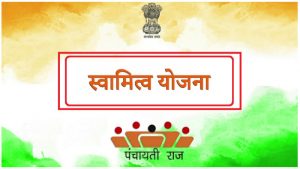Today Current Affairs: 5th May 2021 for UPSC IAS exams, State PSC exams, SSC CGL, State SSC, RRB, Railways, Banking Exam & IBPS, etc
Table of Contents
UCO (Used Cooking Oil) Based Biodiesel:

Union Minister of Petroleum & Natural Gas flagged off the first supply of UCO (Used Cooking Oil) based Biodiesel blended Diesel under the EOI Scheme from Indian Oil’s Tikrikalan Terminal, Delhi.
- To create an eco-system for the collection and conversion of UCO into Biodiesel, the Minister of Petroleum and Natural Gas had initiated Expressions of Interest for “Procurement of Bio-diesel produced from Used Cooking Oil” on the occasion of World Biofuel Day on 10th August 2019.
- Under this initiative, OMCs offer periodically incremental price guarantees for five years and extend off-take guarantees for ten years to prospective entrepreneurs.
- Under this initiative, IndianOil has received 51KL of UCO-Biodiesel at its Tikrikalan terminal in Delhi as of 31.3.2021.
- It is a landmark in India’s pursuance of Biofuels which will have a positive impact on the environment.
- Biodiesel is an alternative fuel, similar to conventional or ‘fossil’ diesel.
- It can be produced from vegetable oils, animal fats, tallow, and waste cooking oil.
- A significant advantage of Biodiesel is its carbon-neutrality, i.e. the oilseed absorbs the same amount of CO2 as is released when the fuel is combusted in a vehicle.
- Also, Biodiesel is rapidly biodegradable and completely non-toxic.
The Common Yoga Protocol (CYP):

The Common Yoga Protocol (CYP) lies at the heart of the International Day of Yoga (IDY) 2021 observation.
- The Common Yoga Protocol (CYP) is a specified sequence of Yogasanas of 45 minutes duration.
- It was developed by some of the most accomplished yoga gurus of India in 2015.
- It was designed for easy learning by common people, irrespective of their age and gender, and can be learned through simple training sessions and online classes.
- The Common Yoga Protocol (CYP) is one of the best introductory programs for beginners to learn Yoga.
Pradhan Mantri Mudra Yojana:

More than 28.68 crore loans for an amount of Rs. 14.96 lakh crore has been sanctioned by banks, NBFCs, and MFIs since the launch of Pradhan Mantri Mudra Yojana (PMMY).
About Pradhan Mantri Mudra Yojana (PMMY):
- It was launched by the government in 2015 for providing loans up to Rs. 10 lakh to non-corporate, non-farm small/micro-enterprises.
- MUDRA, which stands for Micro Units Development & Refinance Agency Ltd., is a financial institution set up by the Government.
- It provides funding to the non-corporate small business sector through various last-mile financial institutions like Banks, Non-Banking Financial Companies (NBFCs), and Micro Finance Institutions (MFIs).
- MUDRA does not lend directly to micro-entrepreneurs/individuals.
- Three Products:
- MUDRA has created three products i.e. ‘Shishu’, ‘Kishore’ and ‘Tarun’ as per the stage of growth and funding needs of the beneficiary micro unit.
- Shishu: covering loans up to Rs. 50,000.
- Kishore: Covering loans above Rs. 50,000 and up to Rs. 5 lakh.
- Tarun: covering loans above Rs. 5 lakh and up to Rs. 10 lakh.
- Loans under this scheme are collateral-free loans.
- Loans have been given to disadvantaged sections of society such as women entrepreneurs, SC/ST/OBC borrowers, Minority community borrowers, etc. The focus has also been on new entrepreneurs.
- As per a survey conducted by the Ministry of Labour and Employment, PMMY helped in the generation of 1.12 crore net additional employment from 2015 to 2018.
- Out of the 1.12 crore of the estimated increase in employment, women accounted for 69 lakh (62%).
Purchasing Managers Index:

The seasonally adjusted IHS Markit India Manufacturing Purchasing Managers’ Index (PMI) was at 55.5 in April 2021, little changed from March’s reading of 55.4.
- It is a survey-based measure that asks the respondents about changes in their perception of key business variables as compared with the previous month.
- The purpose of the PMI is to provide information about current and future business conditions to company decision makers, analysts, and investors.
- It is calculated separately for the manufacturing and services sectors and then a composite index is also constructed.
- The PMI is a number from 0 to 100.
- A print above 50 means expansion, while a score below that denotes contraction.
- A reading at 50 indicates no change.
- If PMI of the previous month is higher than the PMI of the current month, it represents that the economy is contracting.
- It is usually released at the start of every month. It is, therefore, considered a good leading indicator of economic activity.
- PMI is compiled by IHS Markit for more than 40 economies worldwide.
- IHS Markit is a global leader in information, analytics and solutions for the major industries and markets that drive economies worldwide.
- As the official data on industrial output, manufacturing and Gross Domesr\tic Product (GDP) growth comes much later, PMI helps to make informed decisions at an earlier stage.
- It is different from the Index of Industrial Production (IIP), which also gauges the level of activity in the economy.
- IIP covers the broader industrial sector compared to PMI.
- However, PMI is more dynamic compared to a standard industrial production index.
Asiatic lions:

Recently, eight Asiatic lions at Hyderabad’s Nehru Zoological Park have tested positive for the deadly coronavirus.
- It is the first known case of the human infecting the felines and making them sick in India.
- Earlier in 2020, Tiger being infected with Covid-19 was reported in New York (Bronx Zoo).
- The Asiatic Lion (also known as the Persian Lion or Indian Lion) is a member of the Panthera Leo Leo subspecies that is restricted to India.
- Its previous habitats consisted of West Asia and the Middle East before it became extinct in these regions.
- Asiatic lions are slightly smaller than African lions.
- The most striking morphological character, which is always seen in Asiatic lions, and rarely in African lions, is a longitudinal fold of skin running along its belly.
- Asiatic lions were once distributed to the state of West Bengal in east and Rewa in Madhya Pradesh, in central India.
- At present Gir National Park and Wildlife Sanctuary is the only abode of the Asiatic lion.
- In 2020, the Gujarat Forest Department announced an increase in the population of Asiatic lions in the Gir forest region.
- Threats:
- Its vulnerability to unpredictable events such as a plague or a natural disaster, poaching and locals near the Gir National Park killing the lions in retaliation for attacks on livestock.
- Protection Status:
- IUCN Red List: Endangered
- CITES: Appendix I
- Wildlife (Protection) Act 1972: Schedule I
SVAMITVA Scheme:

Union Minister for Panchayati Raj Shri Narendra Singh Tomar released the new framework for implementation of the SVAMITVA Scheme to mark the nationwide roll-out of the SVAMITVA Scheme.
- The SVAMITVA Framework is developed by the Ministry of Panchayati Raj.
- It provides a detailed roadmap and guidelines for the various States in terms of the Scheme objectives, coverage, various components involved, year-wise funding pattern, survey approach and methodology, stakeholders involved and their roles and responsibility, monitoring and evaluation, and deliverables.\
- SVAMITVA, a Central Sector Scheme of the Ministry of Panchayati Raj was nationally launched by the Prime Minister on the occasion of National Panchayati Raj Day on 24th April 2021 after successful completion of the pilot phase of the Scheme in 9 States.
- SVAMITVA Scheme aims to provide property rights to the residents of rural inhabited areas in India by using a Drone survey and CORS Networks which provides mapping accuracy of 5 cms.
- The Ministry of Panchayati Raj (MoPR) is the Nodal Ministry for implementation of the SVAMITVA scheme.
- In the States, the Revenue Department/Land Records Department will be the Nodal Department and shall carry out the scheme with the support of State Panchayati Raj Departments.
5G Technology:

The Department of Telecommunications (DoT), Government of India approved permissions to Telecom Service Providers (TSPs) for conducting trials for use and applications of 5G technology.
- The applicant TSPs include Bharti Airtel Ltd., Reliance JioInfocomm Ltd., Vodafone Idea Ltd., and MTNL.
- The duration of the trials, at present, is for a period of 6 months.
- Each TSP will have to conduct trials in rural and semi-urban settings also in addition to urban settings so that the benefit of 5G Technology proliferates across the country and is not confined only to urban areas.
- The objectives of conducting 5G trials include testing 5G spectrum propagation characteristics especially in the Indian context; model tuning and evaluation of chosen equipment and vendors; testing of indigenous technology; testing of applications; and testing 5G phones and devices.
- 5G technology is expected to deliver improved user experience in terms of data download rates (expected to be 10 times that of 4G), up to three times greater spectrum efficiency, and ultra low latency to enable Industry 4.0.
- The TSPs are encouraged to conduct trials using 5Gi technology in addition to the already known 5G Technology.
- It will be recalled that International Telecommunications Union (ITU) has also approved the 5Gi technology, which was advocated by India, as it facilitates much larger reach of the 5G towers and Radio networks.
- The 5Gi technology has been developed by IIT Madras, Centre of Excellence in Wireless Technology (CEWiT) and IIT Hyderabad.
India and United Kingdom Virtual Summit

An ambitious ‘Roadmap 2030’ was adopted at the Summit to elevate bilateral ties to a ‘Comprehensive Strategic Partnership’.
- The Roadmap will pave the way for a deeper and stronger engagement over the next ten years in the key areas of people-to-people contacts, trade and economy, defense and security, climate action and health.
- The two Prime Ministers launched an ‘Enhanced Trade Partnership’ (ETP) which sets an ambitious target of more than doubling bilateral trade by 2030. As part of the ETP, India and the UK agreed on a roadmap to negotiate a comprehensive and balanced FTA, including consideration of an Interim Trade Agreement for delivering early gains.
- The UK is India’s second-largest partner in research and innovation collaborations.
- A new India-UK ‘Global Innovation Partnership’ was announced at the Virtual Summit that aims to support the transfer of inclusive Indian innovations to select developing countries, starting with Africa.
- India and the UK launched a comprehensive partnership on migration and mobility that will facilitate greater opportunities for the mobility of students and professionals between the two countries.
- Both sides agreed to enhance cooperation on new and emerging technologies, including Digital and ICT products, and work on supply chain resilience.
- They also agreed to strengthen defense and security ties, including in the maritime, counter-terrorism and cyberspace domains.




